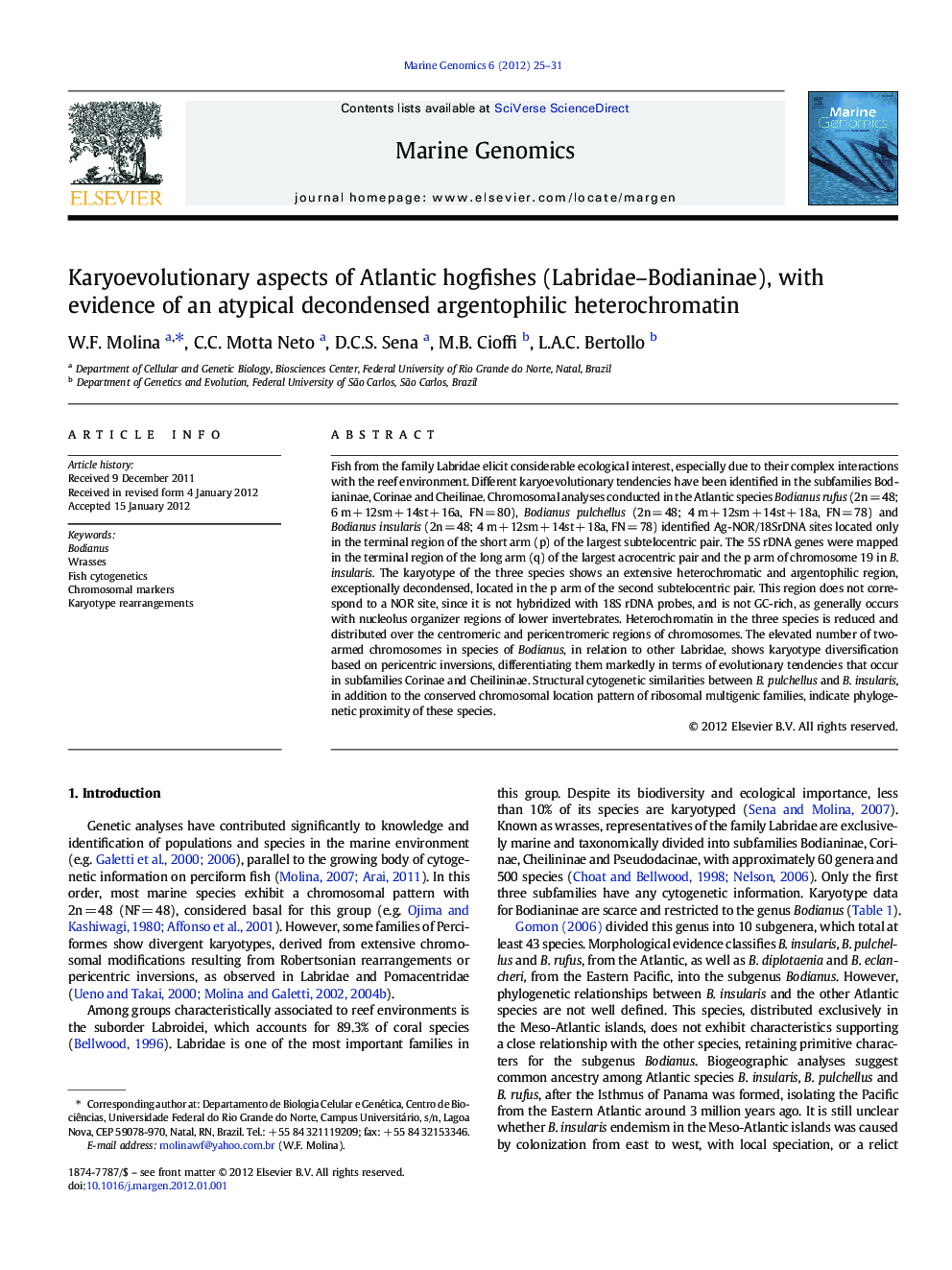| Article ID | Journal | Published Year | Pages | File Type |
|---|---|---|---|---|
| 2058202 | Marine Genomics | 2012 | 7 Pages |
Fish from the family Labridae elicit considerable ecological interest, especially due to their complex interactions with the reef environment. Different karyoevolutionary tendencies have been identified in the subfamilies Bodianinae, Corinae and Cheilinae. Chromosomal analyses conducted in the Atlantic species Bodianus rufus (2n = 48; 6 m + 12sm + 14st + 16a, FN = 80), Bodianus pulchellus (2n = 48; 4 m + 12sm + 14st + 18a, FN = 78) and Bodianus insularis (2n = 48; 4 m + 12sm + 14st + 18a, FN = 78) identified Ag-NOR/18SrDNA sites located only in the terminal region of the short arm (p) of the largest subtelocentric pair. The 5S rDNA genes were mapped in the terminal region of the long arm (q) of the largest acrocentric pair and the p arm of chromosome 19 in B. insularis. The karyotype of the three species shows an extensive heterochromatic and argentophilic region, exceptionally decondensed, located in the p arm of the second subtelocentric pair. This region does not correspond to a NOR site, since it is not hybridized with 18S rDNA probes, and is not GC-rich, as generally occurs with nucleolus organizer regions of lower invertebrates. Heterochromatin in the three species is reduced and distributed over the centromeric and pericentromeric regions of chromosomes. The elevated number of two-armed chromosomes in species of Bodianus, in relation to other Labridae, shows karyotype diversification based on pericentric inversions, differentiating them markedly in terms of evolutionary tendencies that occur in subfamilies Corinae and Cheilininae. Structural cytogenetic similarities between B. pulchellus and B. insularis, in addition to the conserved chromosomal location pattern of ribosomal multigenic families, indicate phylogenetic proximity of these species.
► Karyoevolutionary tendencies have been identified in the Labridae subfamilies. ► Bodianinae present a higher number of two-armed chromosomes in the family. ► Bodianus karyotype shows a long argentophilic region, exceptionally decondensed. ► Notable decondensed argentophilic chromosome regions are not associated to rDNA sites. ► The conserved chromosomal traits indicate phylogenetic proximity of these species.
